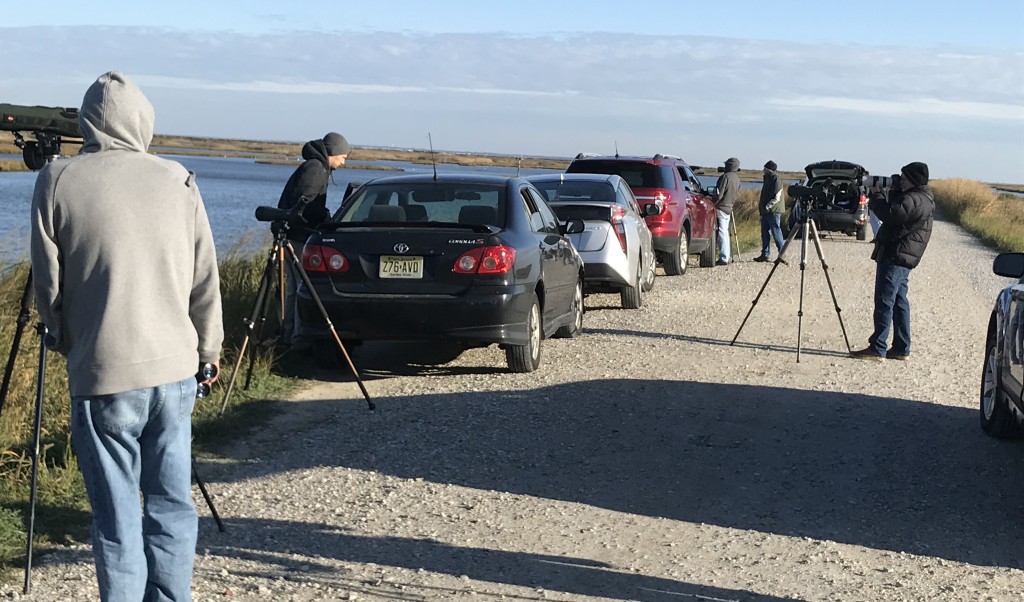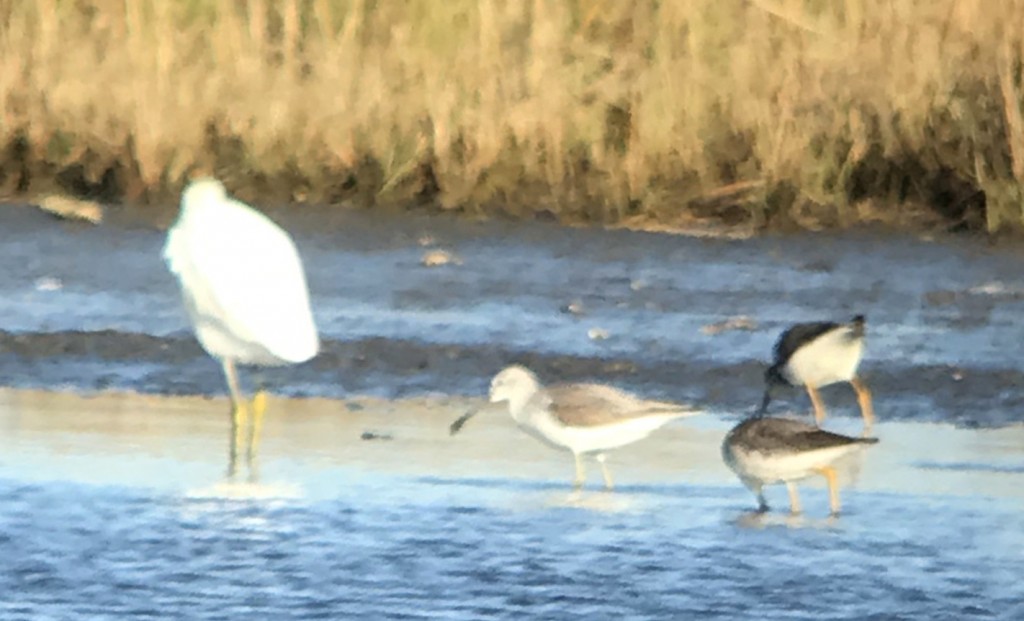I don’t normally chase rarities, but will occasionally make exceptions. When the bird is a Common Greenshank and it is appearing in nearby Forsythe NWR (=Brig), it’s not a tough decision, so today became an official chase day. So let’s start at the beginning. Three days ago Sam Galick spotted a Common Greenshank at Brig. When the report was posted, I’m guessing that the initial response of most local birders was probably something along the lines of “That’s great. What’s a Common Greenshank?”. Well, Common Greenshank is essentially a Eurasian version of a Greater Yellowlegs, with a similar size, shape, behavior, and habitat preference. At this time of year they are distinguishable by the Common Greenshank having a whiter head and dull olive legs compared with the bright golden legs of a Yellowlegs. It is relatively common in Europe, but is incredibly rare in North America. According to the ABA blog, there are fewer than ten North American records for Common Greenshank away from Alaska. All Common Greenshanks reported in the eastern part of the continent have occurred in the Atlantic Canadian provinces, alhough there are single records each from Barbados and Bermuda. And there it was, being spotted only 37 miles from my home. How could I not look for it?
I was busy for the past two days, but the bird was spotted briefly both days, giving hope that it might hang around long enough for me to see it. Today I finally had an opening in the schedule, so I called up brother Rich and headed south. When we were only halfway out on Wildlife Drive, a text alert arrived saying that the bird was just spotted about a mile further up the road. At this point there was no need to be subtle; the signs saying 15 mph speed limit were essentially ignored and all other birds were passed by. There was a sizeable parade of cars and birders and scopes assembled on the east dike already.
We took our place in line, pointed our scopes toward the impoundment, and it was pretty easy to quickly scan through the group of feeding Greater Yellowlegs and spot the bird that was different from the rest, with the whiter head and greener legs of the Common Greenshank clearly visible. The situation was tough for photos; the bird was scope-viewing distance away, and the morning was a chilly 50 degrees with 15 mph winds that caused scope shake (or was the scope shivering too??). I did manage a few documenting digiscoped photos that are barely worth posting.

